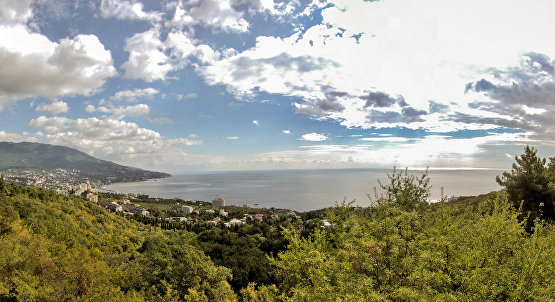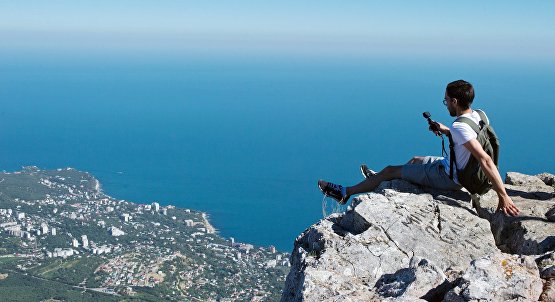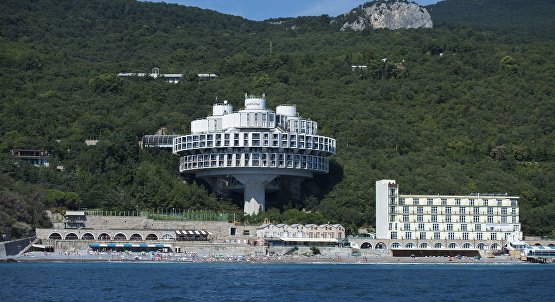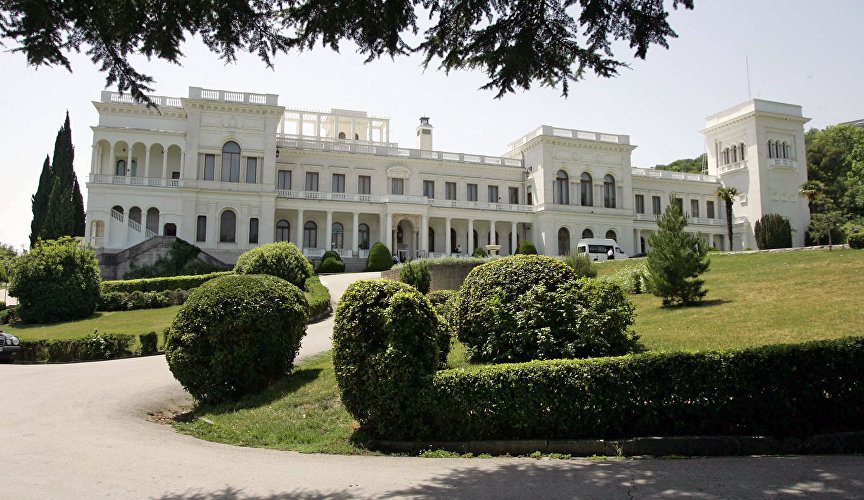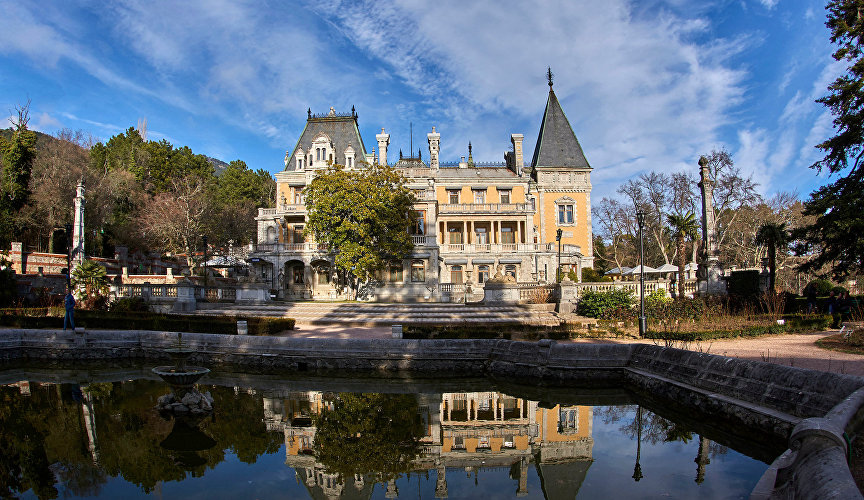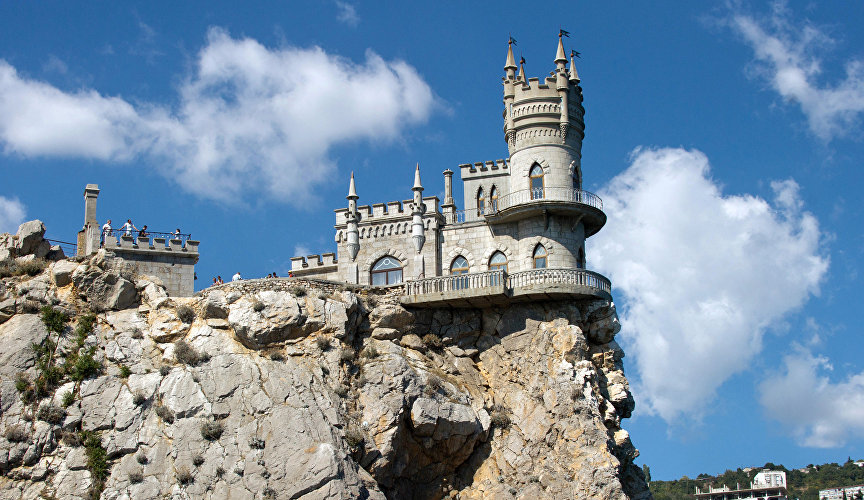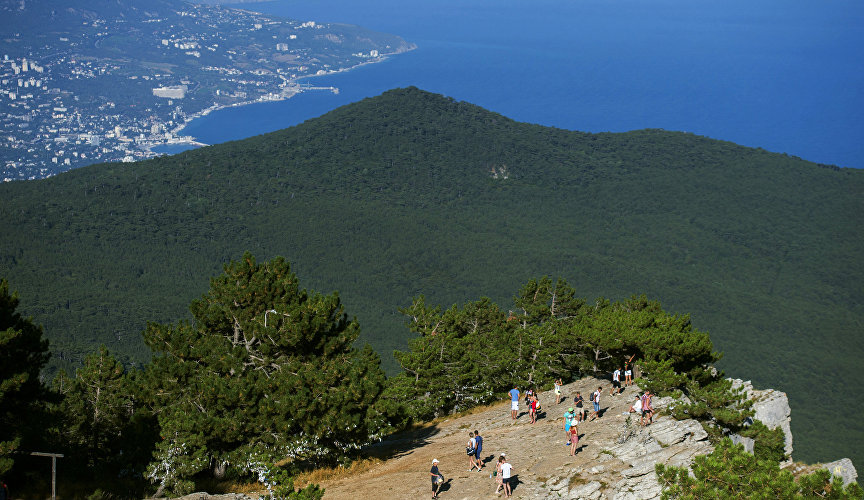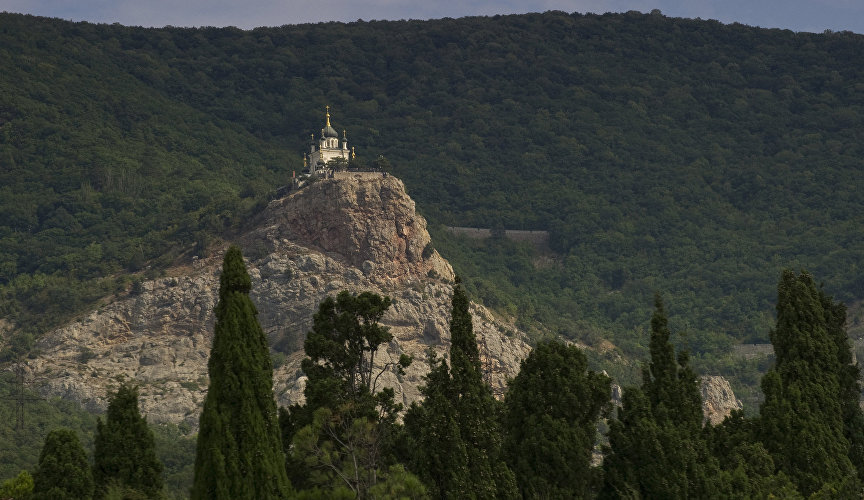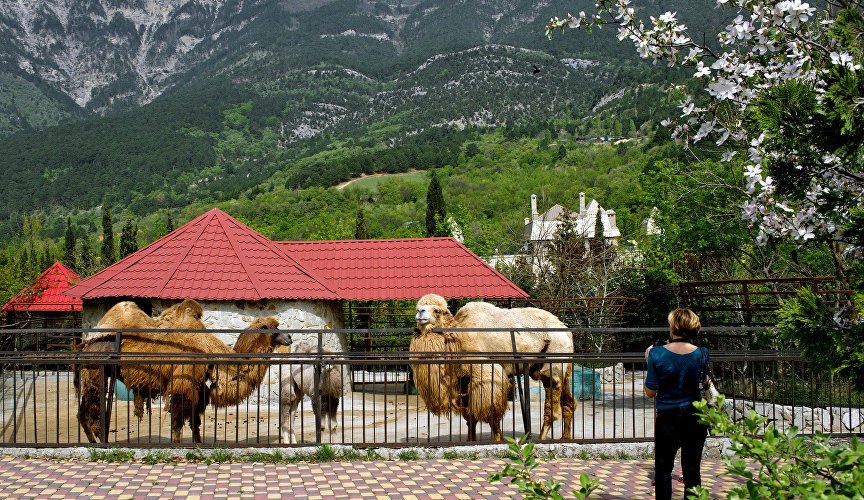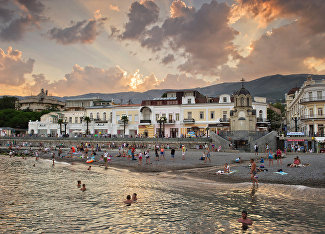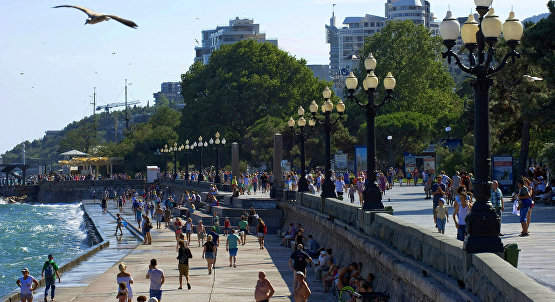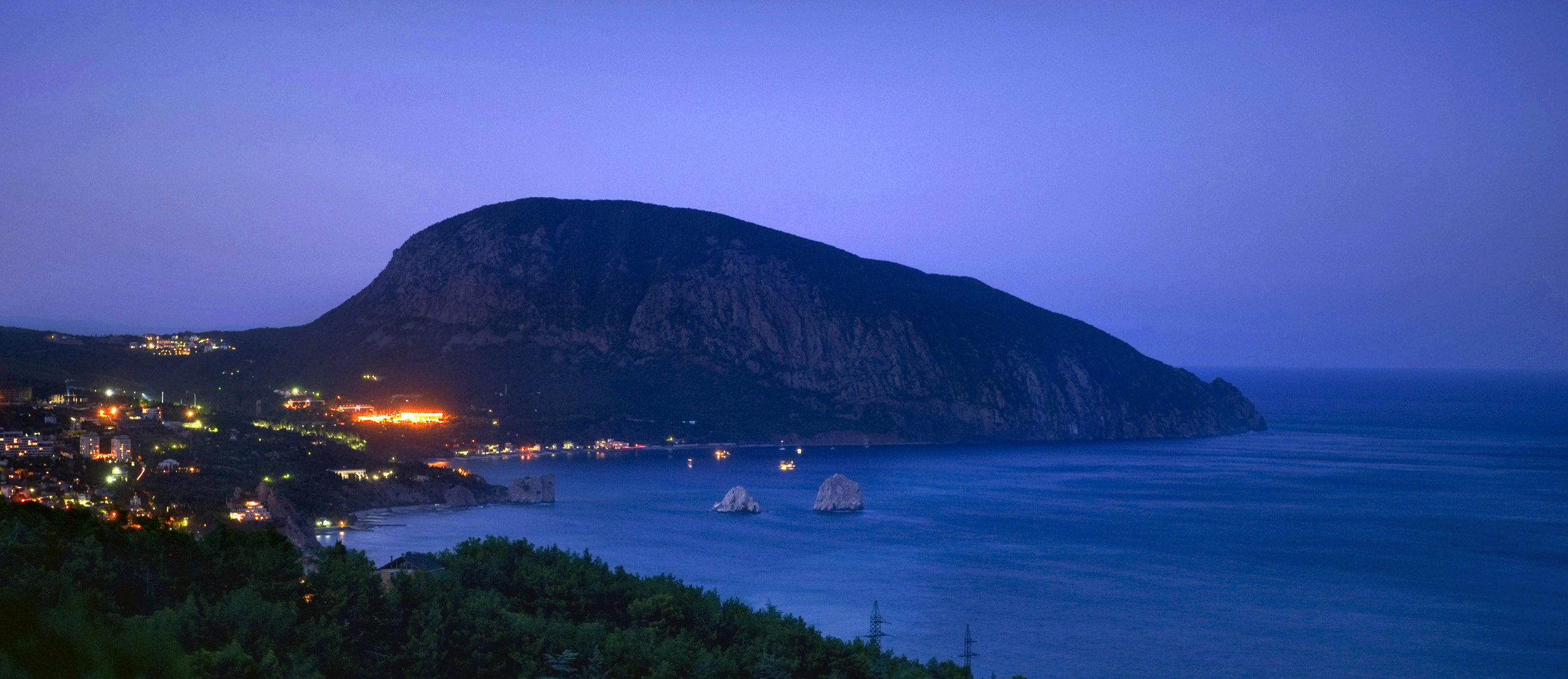Greater Yalta is one of Russia's best-known resort brands. In the past, Yalta was the imperial family's favourite holiday spot, which inspired the classics of literature and painting, the venue for the Yalta Conference and the jewel among Soviet health resorts.
There is the city of Yalta and Greater Yalta, a strip of land that is over 70 km long and includes Alupka, Miskhor, Simeiz, Gaspra, Gurzuf and other towns from Foros in the west to Krasnokamenka in the east. Each of them has its own personality, and one can go on talking about their merits forever.
This area has everything: magnificent palaces, ancient ruins, a healing climate, clean sea, unique plants, pristine forests, sky-high mountains and the best hotels and restaurants in the region. Visitors just have to choose what they like, or go ahead and try everything that this rich land has to offer.
The legend has it that Yalta was founded by Greek seafarers who, having at long last seen the coast (Yalos), called the place Yalita (coastal). Later, in the heyday of the Crimean trade ports, Byzantines and Genoese lived here. After the Ottoman conquest, Yalta was part of the Crimean Khanate, but was not the centre of either political or economic life.
The city got its modern look after Crimea became part of the Russian Empire. Noble families were given estates on the southern coast and the construction of mansions and palaces began. In 1861, the Livadia Estate became the residence of Alexander II, making Yalta the empire's summer capital.
The city of Yalta is located in the valleys of two mountain rivers, the Uchan-Su River (Waterfall) and the Derekoyka River (Fast). From land, the city is surrounded by a half-circle of mountains.
Numerous parks have been created in Greater Yalta, including Livadia, Vorontsov, Kharak, Gurzuf, Cypress, Miskhor, Massandra, Foros, Primorsky, Lower Oreanda, Melas and Chair parks. These parks feature the nature of the southern coastal forest with a wide use of ornamental plants from around the world.
Greater Yalta is home to the Yalta mountain forest nature reserve, which is an important resource contributing to the region's climate and therapeutic environment.
The climate in Yalta is Mediterranean up to an altitude of 200 m above sea level. It is characterised by mild and rainy winter, cool spring, long hot summer and long warm autumn. The average temperature in July is 24.1˚C, and the average temperature in January is 4˚C. In freezing winters, with the invasion of cold Arctic cyclones or Siberian anticyclones, the temperature can drop to -10˚С and even lower.
The swimming season begins in June, when the seawater warms up to 18˚C, reaches its peak in August at 25˚C, and ends in October with 17˚C.
Early summer tends to be rainy, while its second half is dry.
- Livadia Palace was the summer residence of the Russian emperor and the venue for the Yalta Conference in 1945. The Vorontsov Palace in Alupka was designed by English architect Edward Blore, who also designed Buckingham Palace. His other work in Crimea includes the Massandra Palace in Massandra, the Yusupov Palace in Koreiz, the Emir of Bukhara Palace in Yalta itself and other mansions owned by the nobility before the 1917 revolution.
- Chekhov House Museum in Yalta, aka Belaya Dacha, is a quaint building with a garden built to Chekhov's designs and taste. Chekhov's dacha - a modest seaside house in Gurzuf - is also worth a trip.
- The Swallow's Nest Castle located on a 40 m high cliff in the town of Gaspra is one of the most recognisable symbols of Crimea. Today the castle is a venue for art exhibitions.
- The plateau of Mount Ai-Petri is Crimea's highest observation point with scenic breathtaking panoramic view. You can get to the top of the protected peak by cable car from Miskhor or by car from the Bakhchisarai District. In winter, the slopes of Ai-Petri are great for skiing and snowboarding, but world-class infrastructure is still at the planning stage.
- The Church of the Resurrection in Foros is a choice spot for photographers and artists. It was built at the altitude of 412 m on top of a steep cliff in 1892. The city temples are no less picturesque: the Cathedral of Alexander Nevsky, the Church of St John Chrysostom, the Church of the Holy Archangel Michael, the Roman Catholic Church of the Blessed Virgin Mary and the Armenian Church of St Hripsime.
- The Fairy Tale Zoo is Crimea's largest with over 120 species of animals, including many varieties of big cats and primates. Greater Yalta is also home to several aquaparks, a crocodilarium, a dolphinarium and a butterfly garden.
- The Nikitsky Botanical Garden was founded in 1812. It has over 28,000 different plants, including rare ones, ranging from roses to cacti and conifers. The Tulip Parade, which takes place in late April and early May, attracts the greatest number of tourists.
1/7
Livadia Palace
RIA Novosti, Sergey Subbotin
2/7
Massandra Palace
RIA Novosti, Vasiliy Batanov
3/7
Swallow's Nest Castle on top of a coastal cliff in Crimea's Gaspra town
RIA Novosti, Sergey Malgavko
4/7
A view of Yalta from Ai-Petri mountain in Crimea
RIA Novosti, Aleksey Malgavko
5/7
Church of the Resurrection of Jesus Christ in Foros, Crimea
RIA Novosti, Sergey Malgavko
6/7
Skazka Zoo
RIA Novosti, Sergey Malgavko
7/7
Nikitsky botanical garden
RIA Novosti, Aleksey Malgavko
Hide descriptionShow description
Hide descriptionShow description
The Greater Yalta has the greatest number of luxury and high-class hotels and restaurants in Crimea. However, this does not mean that holidays have to be expensive. The coast has the entire range of accommodation from five-star hotels to youth hostels. Health resorts have their own parks, infrastructure, and access area to the sea.
Offering deep-water experience right off the shoreline, the pebbly beaches are separated into smaller sections by concrete wave cutters. The municipal beaches are the most basic. More upscale beaches, including those that have the Blue Flag quality mark, offer top service with restaurants, water shows and entertainment for children.
Yalta offers a wide selection of spa centres and spa services from traditional hot baths and massage to wrapping with Crimean mud and even treatment with local wine.
From the Simferopol airport, you can get to Yalta by bus. Also, from the Kurortny bus station in the city centre, you can take a trolleybus to the southern capital. The bus ride will take two hours; the trolleybus will get you to your destination in 2.5 hours. The distance between the cities along the highway is about 80 km.
Also from Simferopol, you can go straight to Simeiz, Alupka, Gurzuf or Nikita. There's a bus service from Yalta's central bus station and municipal transit stations to each town and village on the south coast.
It will take you about four hours to get from the Crimean Bridge to Yalta (280 km).
You can get to Yalta directly from Russian cities such as Sochi, Krasnodar, Rostov-on-Don and even Moscow. Additional flights are made available every summer.
A high-speed boat, Kometa, runs between Yalta and Sevastopol. You can get to your destination and enjoy the peninsula's spectacular shoreline views in two hours.
The road from Yalta to Sevastopol is about 85 km long. The bus ride is two hours long.
Around the clock hotline of Ministry of Resorts and Tourism of the Republic of Crimea: +7(800)5118018
Tourist Information Centre: +7(978)9256555
Department of Resorts and Tourism, Yalta Administration: +7(3654)237961
The official website of Yalta Administration: https://yalta.rk.gov.ru
Telephone code: 3654
Bus station: +7(3654)342092; +7(3654)342384

